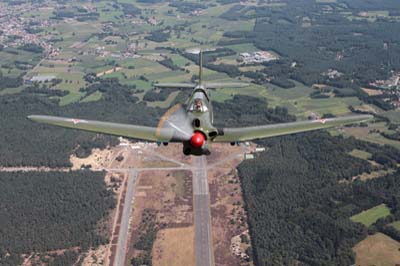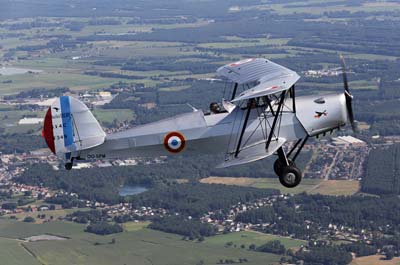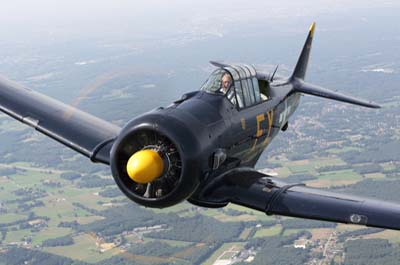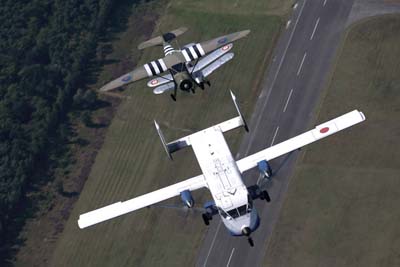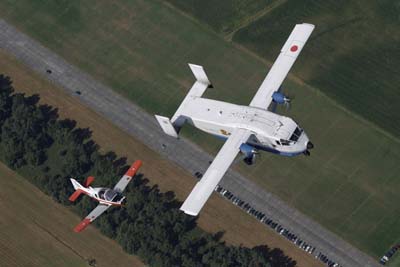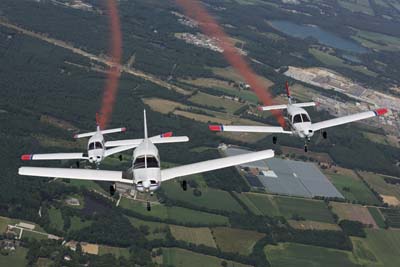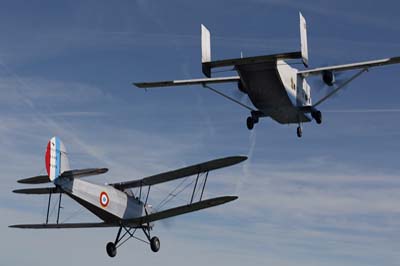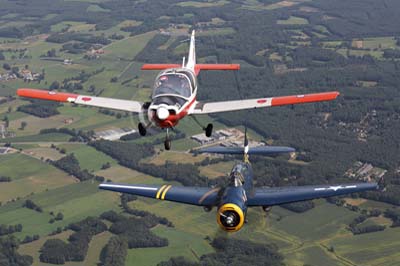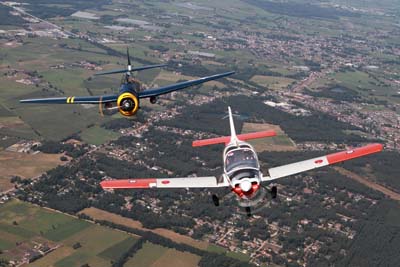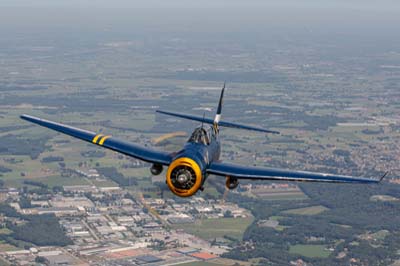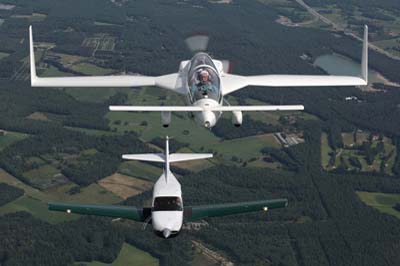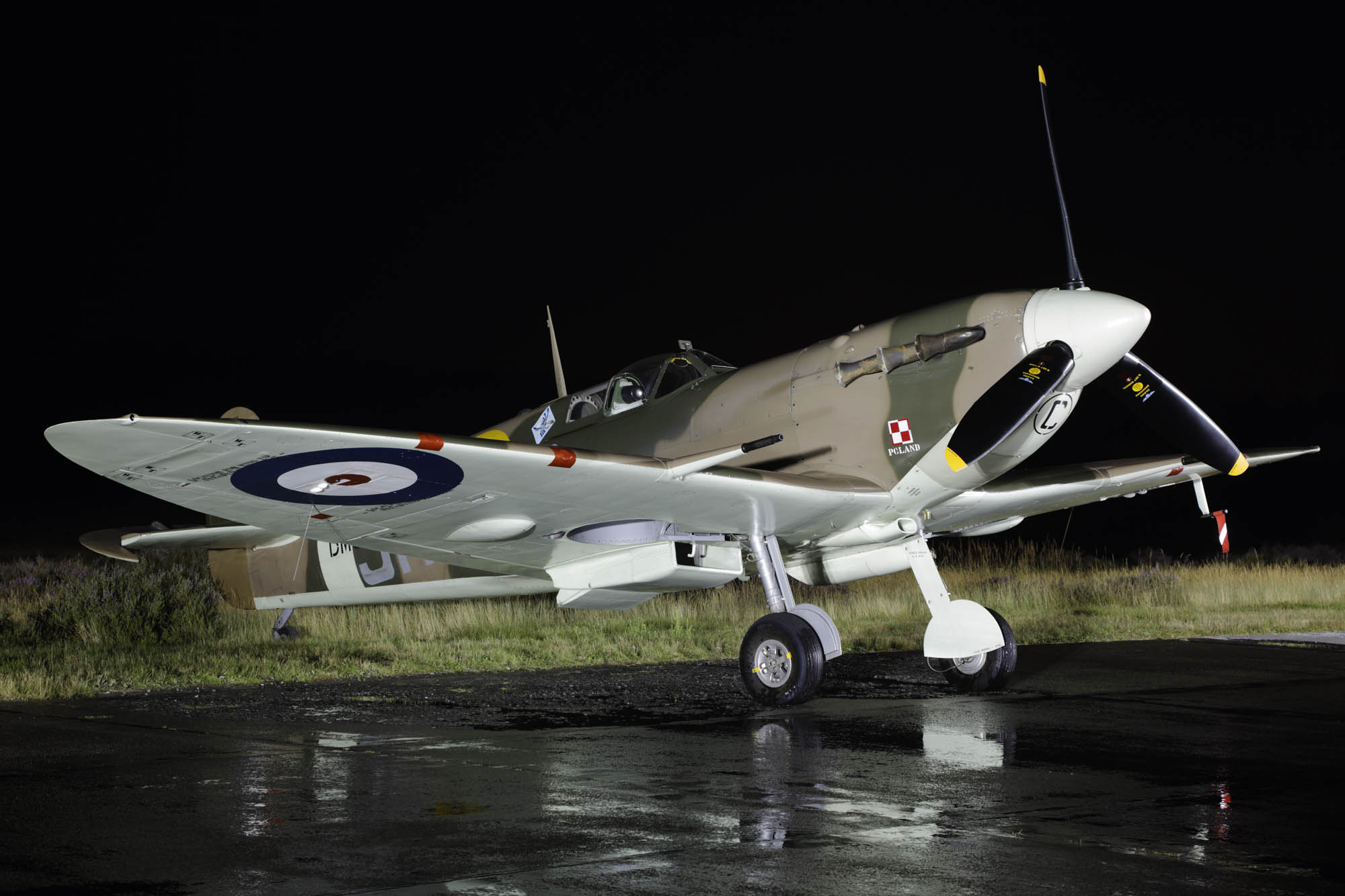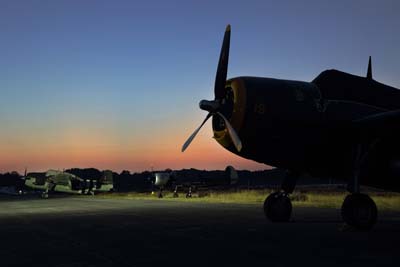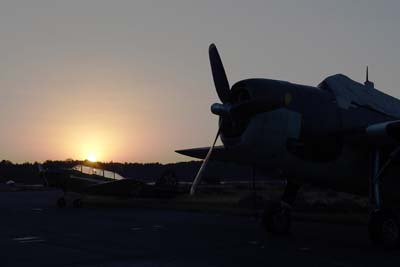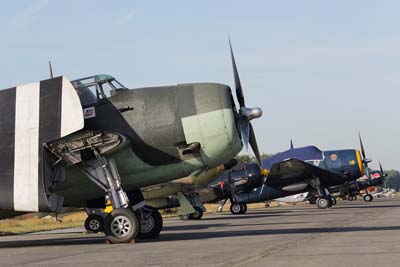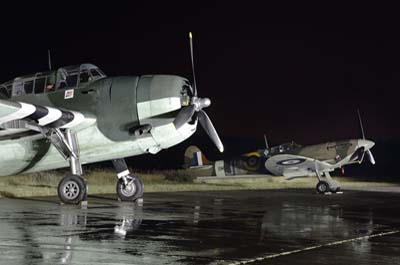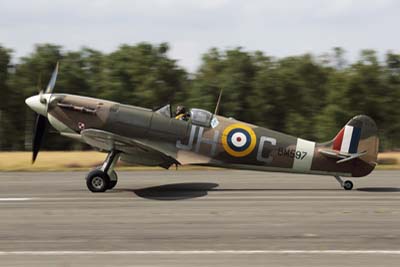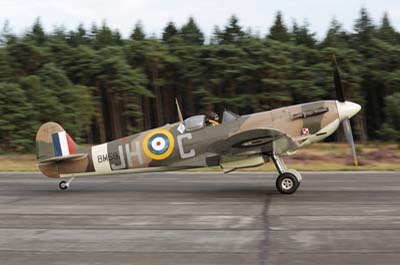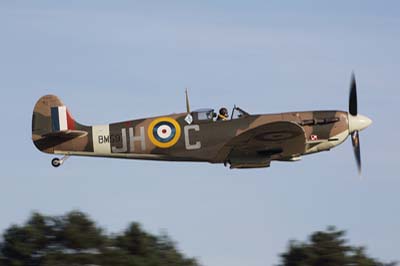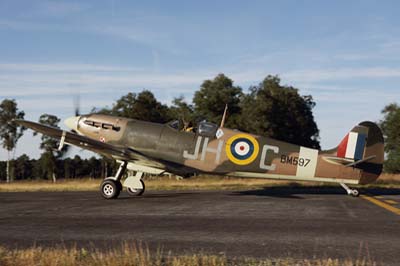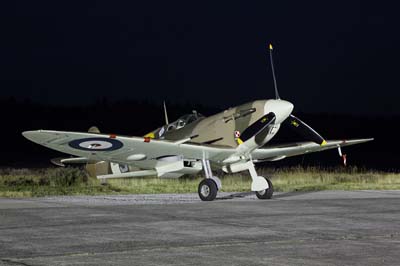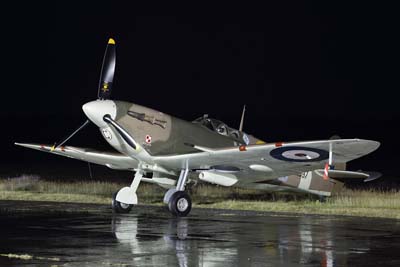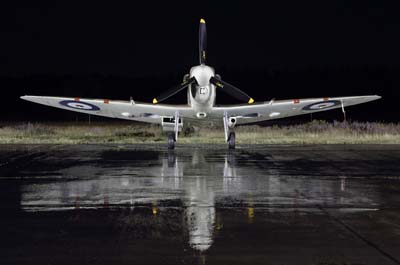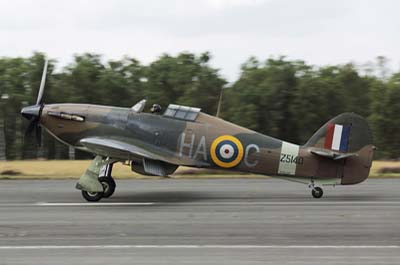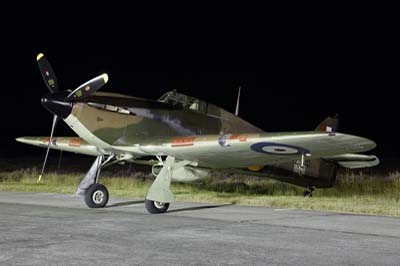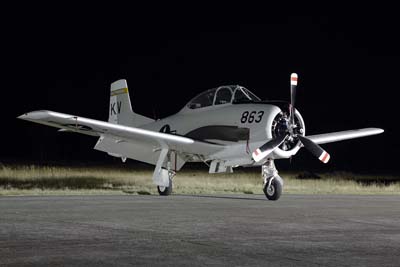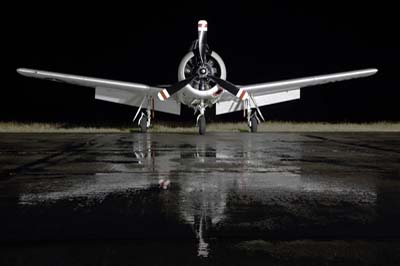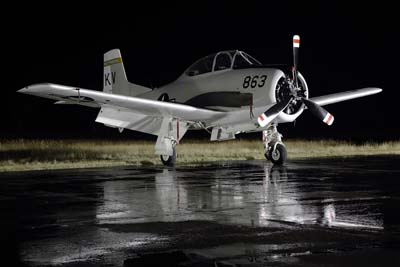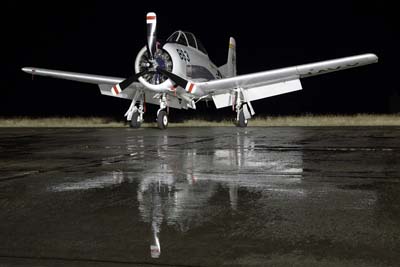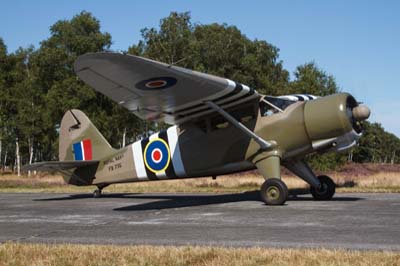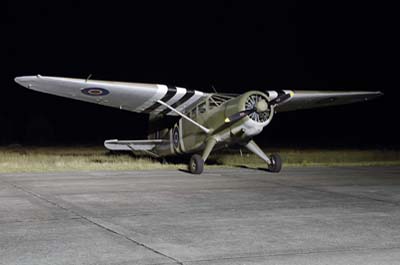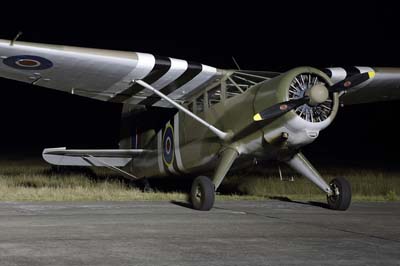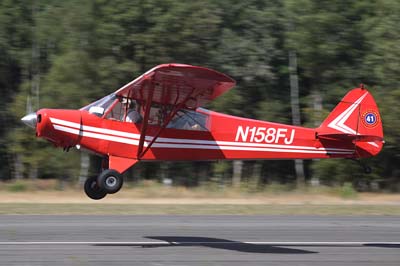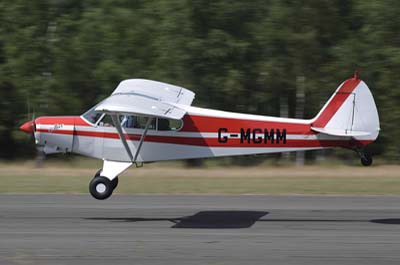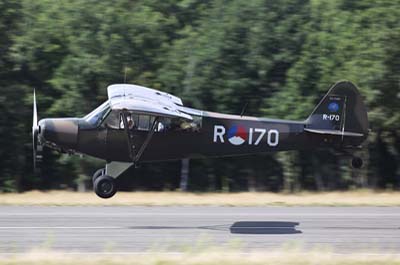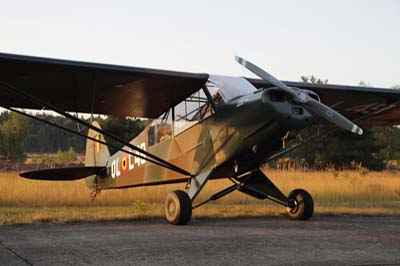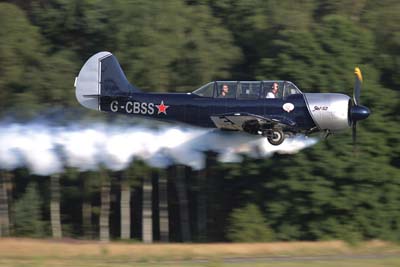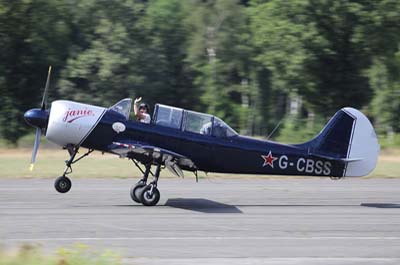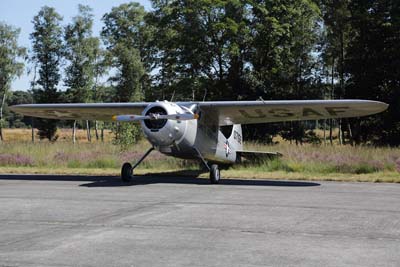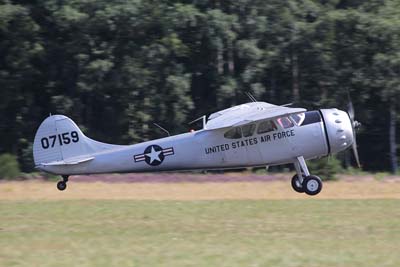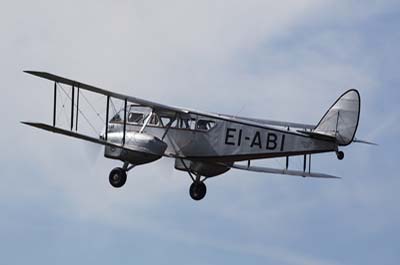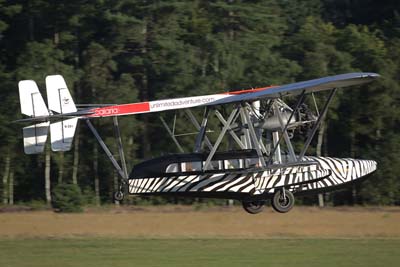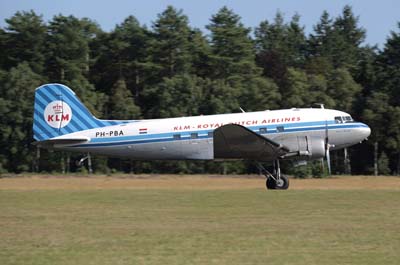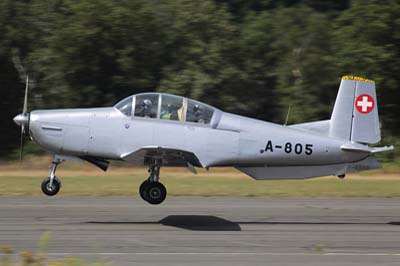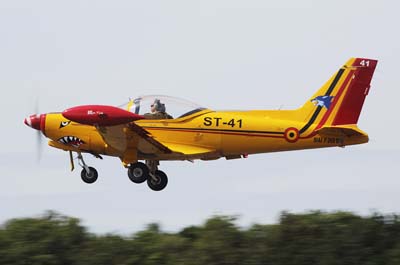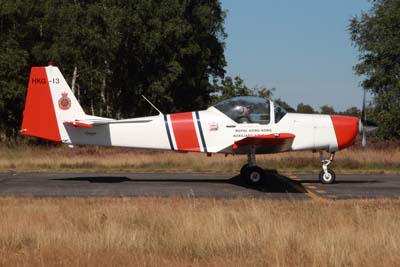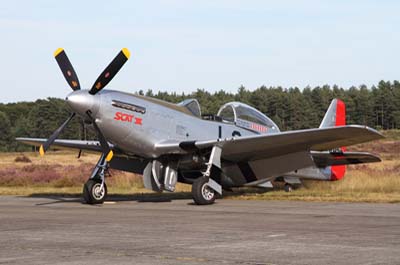Air to Air Photography
General Aviation
Zoersel-Oostmalle, Belgium
August 16-19, 2012
|
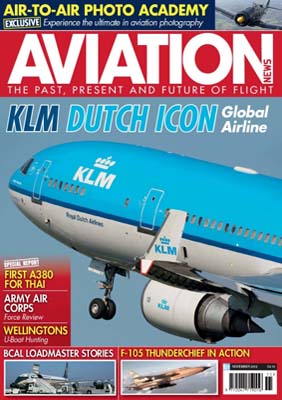
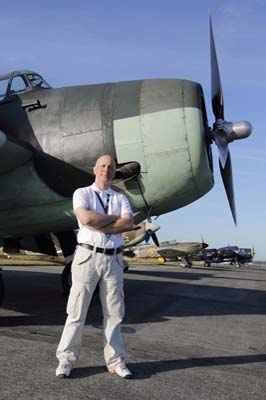 |
Academy chief Eric Coeckelberghs is in charge of proceedings and is very much hands on, if he is not talking on his mobile to pilots or his large team of helpers then he is listening to the requests of the photographers. |
Philip Stevens reports for Aviation News to describe the thrilling experience of air-to-air photography - available to those who attend the Air-to-Air Academy.
Air to air photography is the greatest desire of every serious aviation photographer, with the opportunities so scarce very few people ever get the chance to experience it. However an organisation called the Aviation PhotoCrew, headed by Eric Coeckelberghs, offers photographers the chance to capture aircraft in their natural environment in striking exciting poses and at close quarters.
Securing a place on the Air-to-Air Academy, held annually at Zoersel-Oostmalle airfield which is located 15 miles (24 km) north east of Antwerp is passport to this world. Attending photographers must register as active members to fly. Annual membership is 800 euro (880 euro for 2013) to cover all the costs of running the course which include; the 'flying' class in the Shorts SC-7 Skyvan 3, lectures, period re-enactors and female models (posing with aircraft), unlimited access to the airfield from sunrise to midnight, food and drink on the four day course. Accommodation is not included.
The one-hour Skyvan flight involves shooting general aviation aircraft and gives photographers a taste of air-to-air photography. "This is the first step only, in your second year you will have the opportunity to shoot warbirds", Coeckelberghs explains. "To attract a warbird you have to meet their costs which can be astronomical at thousands of euros. If this is divided by ten for each photographer then it is more affordable, especially as these costs are subsidised by our sponsors and by visitors who pay to photograph the warbirds on the ground." This year's evening warbird flights were on offer for between 800 and 1,500 euro to partially cover cost of fuel and running costs of the respective aircraft, indeed this is only 50% of the real cost for the warbirds to fly a photo mission. One flight included a; North American AT-6 Texan, BAC Jet Provost T.3, Sikorsky S-38, Yakovlev Yak 18, Supermarine Spitfire Mk.5b and a Grumman TBM Avenger. A promised Hawker Hurricane Mk.12a unfortunately had oil pressure problems and remained grounded awaiting a new part.
The annual International Old-timer and Warbird Fly-in has been taking place for many years at this former NATO reserve airfield. The aircraft come and go as they please from Tuesday to Sunday and large crowds attend from Friday onwards. Invited pilots are promised free fuel and are more than happy to fly behind a Shorts SC-7 Skyvan 3 for the Academy.
"When I started air to air photography I found that those that were already doing it were very self protecting", he said. It was only when he was asked to commercially shoot some business jets air to air did he discover that Skyvan's operated locally by Invicta Aviation were available and an ideal camera-ship. "Eventually I realised that I could invite additional photographers to share the experience, this later progressed to the idea of a teaching academy with lectures." Setting it up was not easy; "Aviation is well regulated we have to comply with lots of rules to do with safety and flying procedures" he explained. Safety is paramount; "We are strict with pilots and ask for proof of their experience in formation flying, if they can't we will suggest an instructor fly with them even at the risk of offending the pilot."
Academy chief Eric Coeckelberghs is in charge of proceedings and is very much hands on, if he is not talking on his mobile to pilots or his large team of helpers then he is listening to the requests of the photographers. |
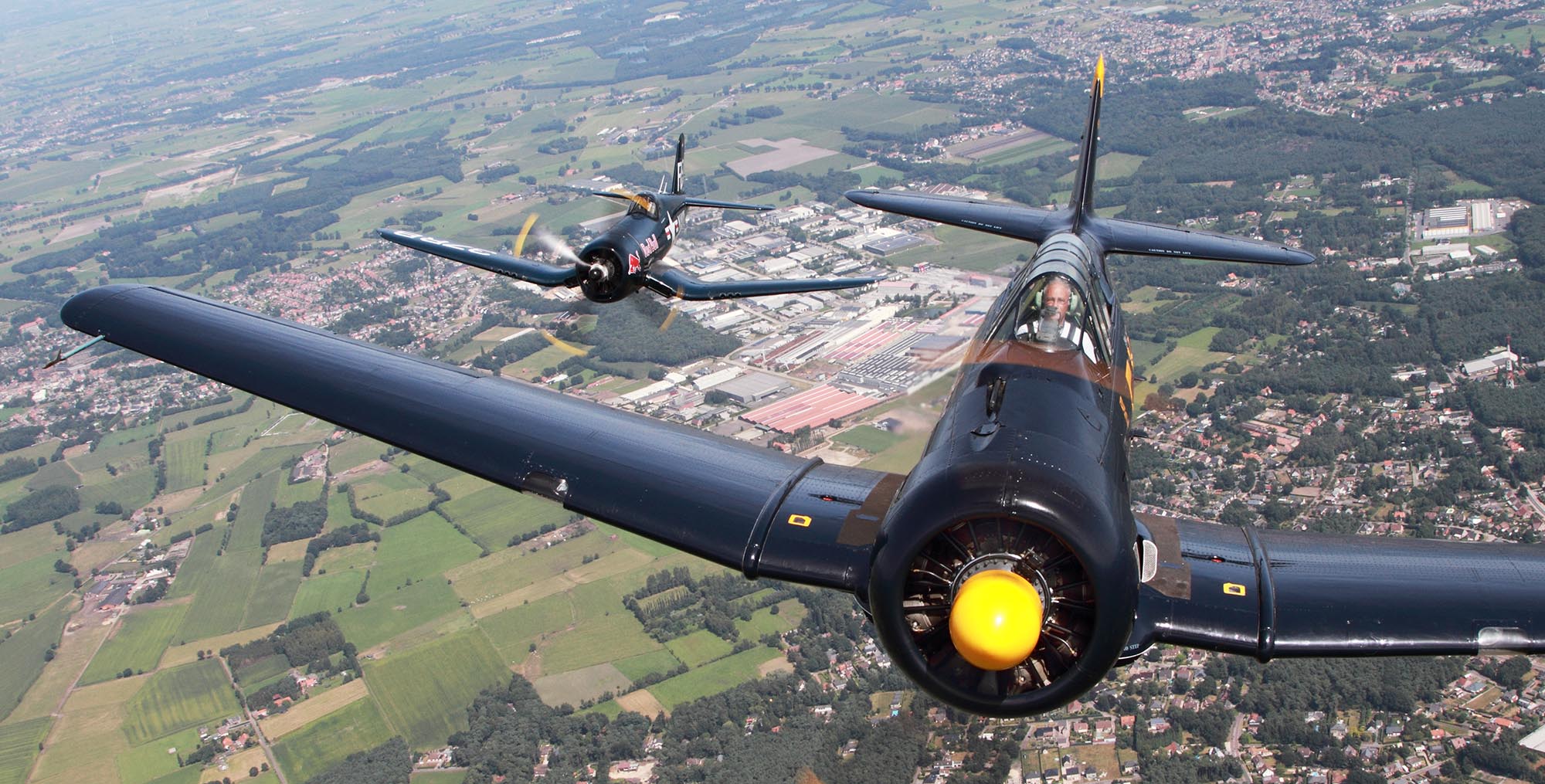 |
| The 'Red Bull' Vought F-4U Corsair (OE-EAS 'RB') closes in behind the Hanno Wesdorp's North American AT-6A Texan (N13FY / 16544 'FY'). As each aircraft joins behind the Skyvan different formation combinations are possible. A relatively fast shutter speed of 1/200th was used to ensure both aircraft are sharp. |
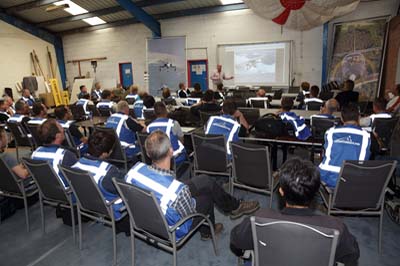 |
John Miller from South Africa a very experienced air to air photographer and formally with 'SA Flyer' Africa's largest selling aviation magazine was very forthright when he spoke about safety stating that the pilot is responsible but the photographer is accountable. |
First day at a new school
I arrived at Zoersel very early on Thursday morning and to be honest it felt like being at a new school on the first day. There were many photographers wandering around the aircraft or congregating in a large pavilion. Eventually registered I was now sporting my blue Academy hi-viz vest and ID card with a pocket full of meal vouchers. Coeckelberghs was found in the briefing hangar where at 09:00 I was told the 60 Academy photographers would be briefed on safety and the week's events and opportunities which included; back-seat rides, evening and night shoots, sunset-shoots and access to key areas around the airfield. Initially there was a lot to take on board and it felt a little over-whelming for the Academy first timers. We all knew in advance of our planned Academy flight in the Skyvan; mine was booked for Sunday, the photographic prospects over the next four days were looking good. Peter Vinther an airline pilot from Denmark and attending for the first time said; "I did not realise there would be so many opportunities on the ground."
Fascinating lectures
Four lectures gave a series of fascinating accounts, imparting their experience and advice on air-to-air photography. Italian Riccardo Braccini covered helicopter shoots followed by Guy Putman described his years as an official Belgian Air Force air to air photographer in the 1960s. John Miller from South Africa a very experienced air to air photographer and formally with ‘SA Flyer’ Africa’s largest selling aviation magazine was very forthright when he spoke about safety stating that the pilot is responsible but the photographer is accountable.
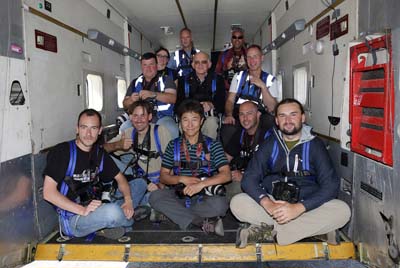 |
Ready to go minutes before departure, an Academy Flight line-up with Daniel Rychcik Flight Director at the Skyvan's rear left position. From the rear ramp the line-up is; three cross-legged, then two cross-legged in the second row then three seated followed by three standing. All positions have their merits and all provide near perfect views. Your size and joint flexibility has the biggest bearing on where you end up shooting from. Some photographers prefer to sit while others choose greater comfort and sit or stand at the back. |
Daniel Rychcik an Academy Flight Director and night shoot coordinator followed describing the Skyvan flights and providing tips and recommendations on lenses and shutter speeds. These were the questions every photographer new to air to air wanted to ask. The answers were not always definitive only suggestions of using short and medium length zoom lenses with shutter speeds of between 1/250th and 1/80th. My selection of a 24-105mm and a 70-200mm zoom lens on a second camera body was the choice for most people. Rychcik’s recommendation for shutter speeds was to work down from a relatively fast 1/250th with each change of aircraft and position when behind the camera-ship. “Get a safe shot to start with to make sure you have something sharp”. Propeller blur is what conveys movement and a full propeller disc is considered perfect. As the number of propeller blades and the engine’s rpm dictate’s the necessary shutter speed for a complete blur disc there can’t be a consistent shutter speed. Some flights can be bumpy and the subject aircraft can dramatically move up and down, achieving a sharp shot is more challenging the slower the shutter speed selected.
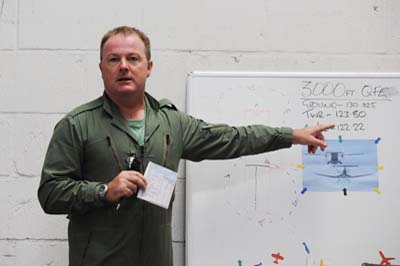 |
Skyvan pilot Ashley Kemp during the flight briefing. He discussed and approved pilot’s requests while confirming their times for joining up. He asked each pilot for his preferred speed so he could adjust his own speed accordingly during the flight. The Skyvan can fly between 75 and 145 knots. The Stinson preferred 90 knots, the Stampe 75 knots and the Bulldog 95 knots. |
Coeckelberghs announced that there were four seats going for an evening Skyvan flight with a Spitfire and Hurricane, to help cover fuel and running costs was to be 800 euro. A lottery was taken using Academy ID cards and four names were drawn, I counted 15 cards still in the box. For many it appeared it was necessary to have a pocket full of euro available.
A walk out to the Skyvan for the newbie’s ended the morning’s session. Here we were shown the seating positions and the safety procedures including the harnesses which attach you securely to the Skyvan. It was explained that a loose object falling from the Skyvan could bring down an aircraft, so cameras should be looped through the harness and additionally fixed to another strap. The lens release button and the battery door were to be taped over and lens hoods removed. You were forbidden to swap lenses and memory cards during the flight.
During lunch I chatted to fellow photographers on the course and we enjoyed swopping tips and exchanging information. The afternoon was spent walking around the airfield taking shots of aircraft arriving, taxiing and later departing for the late Skyvan shoot. The evening meal consisted of three courses of basic but very edible food. As it was very hot on each day the unlimited free bottles of water or orange juice were very welcome.
As the sun came down the night shoot was being organised by Rychcik, he put in a great deal of effort to make sure we got the best possible shots under the floodlights. Calling in a large tanker he sprayed a swathe of water across the taxiway to enhance the photographs. Only as it ended at mid-night did I realise I had not yet checked in at my hotel and was relieved to find it was open 24 hours a day. Many of us had agreed to meet up next morning at 5:30 for sunrise shots. After downloading my day’s images it was now very late and making that early deadline was impossible. I was not the only person who failed to make the sunrise shoot that morning!
Friday was equally exhausting some attendees were flying on the mid-day Academy Skyvan flight others were on the evening warbird flight the rest of us positioned ourselves beside the runway and taxiways, the day ended with another night shoot. It was impossible to do everything on offer shooting from 05:30 till midnight each day is virtually impossible. Rychcik organised a third night shoot on Saturday with another set of aircraft, he appeared close to collapse by Sunday morning! |
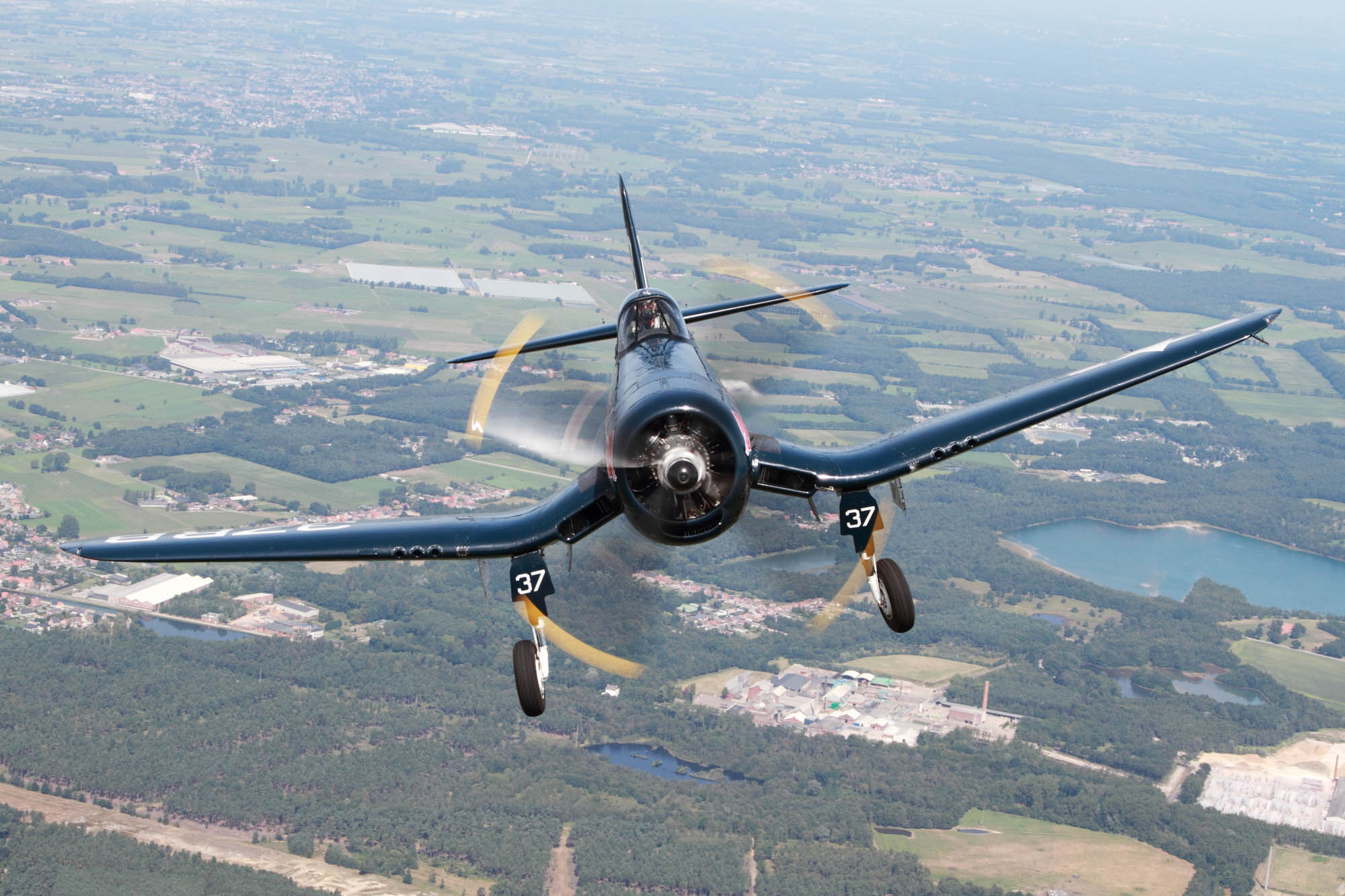 |
| The pilot of the 'Red Bull' Vought F-4U Corsair (OE-EAS 'RB') included lowering the undercarriage to provide a variation of image for photographers in the Skyvan. It is advisable to start with a safe shutter speed of around 1/250th and progressively lower the shutter speed. I was using a Canon 5D Mk.III and Canon 70-200mm (135mm) L IS lens set at f11 with a shutter slow shutter speed of 1/125th. |
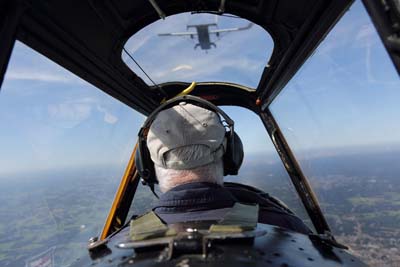 |
Closing in on the Skyvan, the forward view in the Chippie is quite restricted from the backseat. Beattie was eventually asked to rock side to side for the photographers in the Skyvan we were then told to leave to the left by the Flight Director, I could hear all these instructions through my headset. |
Back-seat rides
Coeckelberghs and the three director photo-flight planners negotiated with a number of pilots for flights in other aircraft, which were offered at 150 euro - again the price was determined by the cost of operating the aircraft for the required period and also to buy the pilot a few beers that evening! There was an opportunity to fly for 30 minutes in a North American T-6 Texan, Stinson Reliant, Scottish Aviation Bulldog and de Havilland Canada Chipmunk from which you should be able to shoot one or two aircraft as you fly up to join the Skyvan.
Bjorn Hellenius was here for the second year and had arranged a back-seat flight in the Texan with an Avenger and Yak 50. During a pre-flight briefing with the French Avenger pilot Peter van Loey a Flight Director stepped in to translate and assist with the planning. Hellenius described the experience; "We circled above the airfield the Texan pilot listened to my instructions and positioned the aircraft perfectly with the Avenger. We were banking together and changing positions constantly to give a variation of shots with light from different angles." For the Yak 50 shots he continued; "The Yak 50 pilot wanted some exciting images and so flew inverted, he positioned himself above us so I could shoot straight in to the cockpit."
Flying with a legend
On Saturday I secured a cockpit flight in a Chipmunk which had it's a side window removed to give an unrestricted view. My pilot was John Beattie the Flying Legends Skyraider and former Historic Flight Sea Fury pilot. We discussed flying with a SNCAN SV-4C Stampe. I had some ideas he had a few of his own and these were put to the Flight Director and then to the Skyvan pilot Ashley Kemp.
As soon as we took to the air we climbed for some minutes with the Stampe in pursuit of the Skyvan which already had a Yak 50 behind it with a Stinson approaching. A Bulldog appeared to my left, I fired off a few shots as it slid by and soon we were both in close formation behind the Skyvan. A few shots were taken through the Chipmunk's canopy before Beattie was asked to rock side to side for the photographers in the Skyvan we were then told to leave to the left by the Flight Director. I could hear all the instructions through my headset and was able to direct my pilot when we were away from the Skyvan. This is vital in air to air photography, only you know whether the light and the background are ideal. By asking your pilot to move closer or higher the background changes dramatically. A varied range of shots is preferential to hundreds of similar ones.
I chose to have an early night Saturday to give me a chance of making some sunrise shots on the final day. Just a few of us saw the sun come up that morning. Sunday was also my special day with a Skyvan flight scheduled. For days I debated over the best position in the back of the Skyvan. From the ramp the line-up is; three cross-legged, then two cross-legged in the second row then three seated followed by three standing. I was on the second row and behind the Flight Director. It was cramped and the pain only noticeable after the hour's flight was up. In conclusion I think all positions have their merits and provide near perfect views. Your size and joint flexibility has the biggest bearing on where you end up shooting from. |
Left to right: Airline pilot Jean-Michel Legrand's Yakovlev Yak-18 (OO-IAK) is at 3,000 feet (914 m) above the Zoersel airfield which can be clearly seen below his aircraft.
The immaculate French built SNCAN Stampe SV-4C (OO-SPM) was escorted to the Skyvan by John Beattie in his DHC.1 Chipmunk allowing the author/photographer to take this stunning shot at close quarters. Four other Belgian built Stampe-Vertongen SV-4Bs also attended the Zoersel fly-in. I was able to direct Beattie using the intercom to make sure I was at an ideal height. |
Photography from the back of a Skyvan
Strapped in we were soon racing down the runway and climbing to 3,000 feet (914 m) to fly a figure of eight track above the airfield and join up with a succession of aircraft. In just one hour I shot; a Texan, Avenger, Vought F-4U Corsair, Bulldog, a formation of three Piper PA-28s which were followed by a Rockwell Commander with a Speed Canard. We were especially lucky to get the Avenger and Corsair you should not expect such expensive warbirds on an Academy flight.
Before I got to the Academy I had some concerns about safety but the professional manner in which all the flying and air-to-air photo shoots were organised swept away my worries and I came away with more exciting shots than ever imagined. I made many new friends and contacts and was satisfyingly exhausted.
Next year's Academy is due to take place at the same airfield between August 21-25 for more information go to www,air2air-academy.com.
Academy first timer Oyvind Hermann a doctor from Norway was dramatic in describing his first Skyvan flight; "The Spitfire was so close, it was like participating in a movie, an out of body experience. It was there in front of us. For a time I just put down the camera to enjoy the experience, it was one of the greatest moments in my life." |
Left to right: Chippie pilot John Beattie had agreed with Ash Kemp (Skyvan pilot) that he could climb and turn sharply over his aircraft to get this unusual shot, showing how close the Stinson AT-19 Reliant (N1943S) and SNCAN Stampe SV-4C (OO-SPM) were in formation behind the camera-ship. We did the same maneuver when the Bulldog was being photographed.
A formation of Piper PA-28-161 Cadet/Warrior IIIs (OO-EBU, OO-VCU and OO-VMY) known as 'The Victors' arrived with trailing red smoke. All three moved around the sky in different formations from side by side to one behind each other to give a varied range of images.
SNCAN Stampe SV-4C (OO-SPM) pulls up close behind the Skyvan in close formation with my Chippie camera-ship. |
Left to right: Scottish Aviation Bulldog T.1 (G-CBJJ ex RAF XX525 '03') and Grumman TBM-3R Avenger (HB-RDG) were paired up for this unusual combination. Unusual pairs whilst not my preference were frequently arranged the oddest being a Jet Provost and Spitfire. The TBM-3R Avenger looks much better on its own.
Gyroflug SC-01 Speed Canard (D-ENWG) with Rockwell Commander 114 (D-EZWG). Flown by a husband and wife partnership they usually escorted the Skyvan back to the airfield at the end of the photo shoot. |
| From around the airfield day and night |
| Supermarine Spitfire LF.Vb (BM597 'JH-C' / G-MKVB) of the Historic Aircraft Collection. The Historic Aircraft Collection's Supermarine Spitfire LF.Vb (BM597 'JH-C' / G-MKVB) flew with the Skyvan on Thursday and was available day and night for Academy photographers. Academy Flight Director Daniel Rychcik was also responsible for the night photography sessions. With considerable personal effort he doused the taxiway with water from a tanker and positioned mobile spotlights for a more pleasing effect. |
| Left to right: Grumman TBM-3E Avenger (F-AZJA) captured from 05:30 to 23:50. |
| Left to right: Supermarine Spitfire LF.Vb (BM597 'JH-C' / G-MKVB) of the Historic Aircraft Collection was flown by Flt Lt Charlie Brown. |
| Left to right: Spitfire LF.Vb (BM597 'JH-C' / G-MKVB) in the dark with and without a soaked taxiway. |
| Left to right: Hawker Hurricane XIIa (RCAF 5711 painted as 'Z5140' HA-C' / G-HURI) of the Historic Aircraft Collection. It was flown by Flt Lt Dave Harvey on the Thursday with the Spitfire but unfortunately developed oil pressure problems and was grounded till a part could by flown out from the UK. |
| Left to right: North American T-28 Trojan (NX377WW painted in US Navy colours as 137777 '863 KV'). |
| Left to right: Stinson AT-19 Reliant (N1943S painted in Royal Navy colours as FB735) it also flew with the Skyvan during the week. During World War II, the Stinson Reliant was used by the United States Army Air Forces as a utility aircraft, designated UC-81, and as a trainer, designated AT-19. The Royal Navy and Royal Air Force also employed the Reliant for light transport and communications duties. After the war, the aircraft was sold on the civilian market under the name Vultee V-77. |
| Left to right: Piper PA-18-150 Super Cubs (N158FJ and G-MGMM 'Alice'), Piper L-21B Super Cub (PH-ENJ as 'R-170' ex ALAT 54-2460) and Piper PA-18-95 Super Cub (OO-LGB painted as Belgian Army 'OL-L49'). |
| Left to right: Yakovlev Yak-52 (G-CBSS 'Janie' ex ex RA-44475) and Cessna LC-126A (195) (N3458V as 07159) built in 1948 it is based at Saint-Ghislain in Belgium. |
Left to right: de Havilland DH.84 Dragon I (EI-ABI) named 'IOLAR' of Aer Lingus.
Tom Shrades Sikorsky S-38 (NC29V) 'Osa's Ark' was used by Academy photographers as a cameraship and also as a subject behind the Skyvan. From designated areas along each side of the runway you can shoot all the arriving and departing aircraft. The public are kept well away from these areas. Designed as an eight seat amphibious aircraft it was known as 'The Explorer's air yacht' of which 110 were built from 1928. This example is mostly a modern day replica however its wings and tail section were from an original S-38. The paint scheme applied is that of Osa and Martin Johnson's film making expedition to Africa from 1933 to 1934, their original aircraft was written off in Cuba ten years later.
Douglas DC-3 Dakota (PH-PBA) in a period KLM scheme. |
| Left to right: Pilatus P-3 (F-AZHG formally Swiss Air Force A-805). SIAI-Marchetti SF.260D (Belgian Air Force ST-41). Slingsby T-67M-200 Firefly (G-BXKW formally HKG-13 of the Hong Kong Auxiliary Air Force). North American P-51-25NA (PH-VDF / 44-72922 'Scat VII') this is its orignal paint scheme since 1944 although it was completely rebuilt in 2006 after fatal crash in 2003. It is now based at Antwerp. |
At the end of the day - my personal conclusion
At the beginning of the week there are only thoughts of expectation, hopes and wishes. By the end of the week I noticed an apparent change in the collective mood. Some photographers felt they had missed out on an aircraft or an opportunity, perhaps because someone else had got a better selection of aircraft or their light was better on their particular flight. I puzzled over this, all the photographers could show you a great selection of images they had taken they were having a good time, there were no real grounds for complaint. In the end I decided that the change in mood should be attributed to physical and mental exhaustion. The flights for many were a new and unfamiliar experience requiring a great deal of mental stamina and concentration. The airfield is open from before sunrise to midnight most wanted and tried to do everything on offer. Fatigue was noticeable as people turned up for breakfast perhaps having done the sunrise shoot two hours earlier and after two night shoots the hours of lost sleep had inevitably taken its toll.
As each day, the flights and even the weather is often different then really you should not expect to get or do everything possible. If you got the Spitifre then you should expect to miss out on say the Avenger pair. Coeckelberghs can only do his best; he can't fulfil everyone's wishes, opportunities have to be shared out particularly as demand grows. Coeckelberghs will not take risks he can't gamble on the weather being good the whole week. He could organise more Skyvan flights, but if the weather turns bad then there will be a backlog which he could not recover from and people would have to go away having missed out on their promised flight.
When I met Coeckelberghs at the Saturday night BBQ he told me he still had not used his camera; "I have to make sure everything is running right. I have had some great opportunities in the past this week is for others to experience air to air photography." It must be remembered that this is a non-profit making organisation, the flights are subsidised by sponsors and the money raised is used just to keep the warbirds flying, the only profit that is the enjoyment and pleasure flying and photography brings to everyone here.
By Sunday afternoon everyone is beginning to make their way home fulfilled and exhausted. When you get home and reflect on what you have achieved and reviewed the thousands of images taken you will realise that the event was extraordinary with more opportunities than you could have dreamed of. More importantly you have will have an amazingly diverse range of images and a group of new friends and contacts. |
 |


